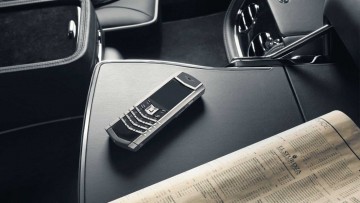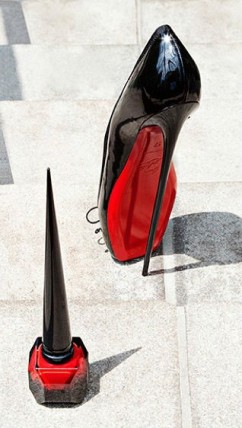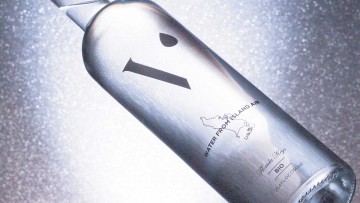Show someone how much you care with just three little words – Tiffany Blue Box.
These iconic encasements have been as stalwart a dimension of the Tiffany brand as the diamonds themselves since the mid-1800s with the pale robin’s egg blue influencing other luxury products craving that “halo effect” ever since.
Not only is the colour trademarked and given its own Pantone reference (1837 – to mark the year the company was founded), but the white satin ribbon and even the term “Tiffany Blue Box” have lawyers guarding their backs.
So when did luxury packaging become as coveted as the objects it contains?
“The Tiffany Blue Box is possibly the most desired and recognisable luxury packaging in the world,” says Liz Walker, a freelance luxury marketing consultant.
Witness women literally stroking their Dior carrier bags full of anticipation, yet with the satisfaction of knowing what’s inside
“The value is what lies inside the box, which is why the box itself is so appealing. It is instantly recognisable as Tiffany’s. Successful brands establish such key identifiers and iconic codes, adding to their brand marque.”
Improving customer experience
The role of the humble carrier bag is becoming more and more important, especially for gifting brands.
Liberty operations director Atty Hussein says: “Every online customer gets a carrier bag and we stick a ribbon on the top with the assumption it is going to be a gift. Even if the customer keeps it for themselves, that is elevation for us in terms of giving every customer – whether they visit the store, go online or come into contact with a Liberty employee – a sense of pleasure.”
We like the sensory aspects, unravelling the ribbons, breathing in the scented tissue paper, savouring the very tactile aspects of unwrapping. Witness women literally stroking their Dior carrier bags full of anticipation, yet with the satisfaction of knowing what’s inside.
And these bags carry big business. According to specialist research consultancy Smithers Pira, global luxury packaging, while hit by the financial crisis of the past few years, reached a value in 2013 of $13.6 billion and is forecast to grow an average of 4.4 per cent by value and 3.1 per cent by volume over the next five years.
Vertu mobile phones
Taking cues from the luxury car industry, mobile phone company Vertu – and much of the luxury market with it – has moved away from expense for its own sake.

Vertu
Evidence of quality and longevity are paramount rather than the $30,000 solid gold limited edition Boucheron 150, launched in 2007, enclosed in a leather-lined luxury case made from a rare type of walnut.
Jon Stanley, Vertu’s head of public relations, events and sponsorship, says that approach is less relevant for the company today. The latest Signature handset rests in a sophisticated suede-lined board casing, where each individual element, from the battery and headphones to the authenticity certificate, is encased separately, emanating class.
“These days the physical bits that come with the box are designed to be very tactile and have a bit of theatre, but also to be practical in terms of protecting everything that’s inside,” he says.
The Vertu website has a film dedicated to its “unboxing” and it’s quite a ceremony, probably befitting a mobile phone whose entry-level handset costs £4,200.
Louboutin
Last summer, Christian Louboutin made headlines with Rouge Louboutin, a nail polish the exact hue of the famous shoe soles, featuring an eight-inch long wand reminiscent of his highest-ever spike stiletto design, Ballerina Ultima.

Rouge Louboutin and Ballerina Ultima
The iconic nail polish comes in a “faceted, weighted glass bottle with a unique ombré effect”; the bottle itself enclosed in a black lacquered box with a red reveal.
At £36 for a nail polish, the standard range was a steal on Starlight, the limited edition launched last Christmas. With 1,500 Strass crystals hand-applied and only 1,000 units produced, for £495 it had better give an unbeatable manicure.
Examples like this demonstrate the extent to which emotion can take over and practicalities fade into insignificance.
According to Smithers Pira, three of the driving forces causing a shift in luxury packaging are the need for personalisation – fine-tuning the customer experience, sustainability and eco-concerns – essential for brand image yet historically at odds with the idea of luxury, and the rise of e-commerce – as luxury brands increasingly adopt an online presence.
Having pioneered luxury e-commerce, NET-A-PORTER exemplifies how brands are overcoming the conundrum of maintaining the air of luxury in the face of today’s increasingly digital, and therefore democratised, consumerism.
Tapping into another main theme – sustainability – NET-A-PORTER’s iconic white bags, black ribbons and subtle typography are now appealing to increasingly eco-conscious high-net-worth customers, who can opt for brown environmentally friendly packaging instead. Less visual impact, but proof that you’re listening to your customers as affluence and social conscience are no longer mutually exclusive.
Veren water
Giving their own eco-nod to the more iconic bottle designs, often containing premium spirits, Veren is a new entrant to the UK bottled water market.
Producing only 3,000 bottles a month globally, it is sourced from water vapour in the pristine atmosphere of a tropical island in the Florida Keys, 80 miles off the Gulf of Mexico.
“We see a lot of packaging in the market where there’s no connection between why they’ve chosen that packaging and what the product is, such as champagne,” says Veren co-founder Duane Orridge.
“We looked at things like our source being very eco-friendly, and wanted to try and mimic that character in the packaging.”
Listed only in a handful of the world’s finest hotels, Veren is coming soon to Harrods, where it will retail for £20.
The bottles are made from extra flint glass, screen-printed with white organic ink and their ebony caps are custom made in Italy, naturally varnished to show off the grain of the wood.
The product needs to blend in with the environment, not compete with it, says Mr Orridge, whether a sleek minimalist or extraordinarily opulent hotel.
So how much does it really influence decision-making? Do people buy the book or the cover?
“We would love to think people buy into our story, but then it’s all about first impressions. Our water is mainly presented at Michelin-starred restaurants. But if you’re just making a decision off a shelf in Harrods and you’ve never tasted it before? It’s probably 80 per cent packaging,” Mr Orridge concludes.
Improving customer experience
Vertu mobile phones



